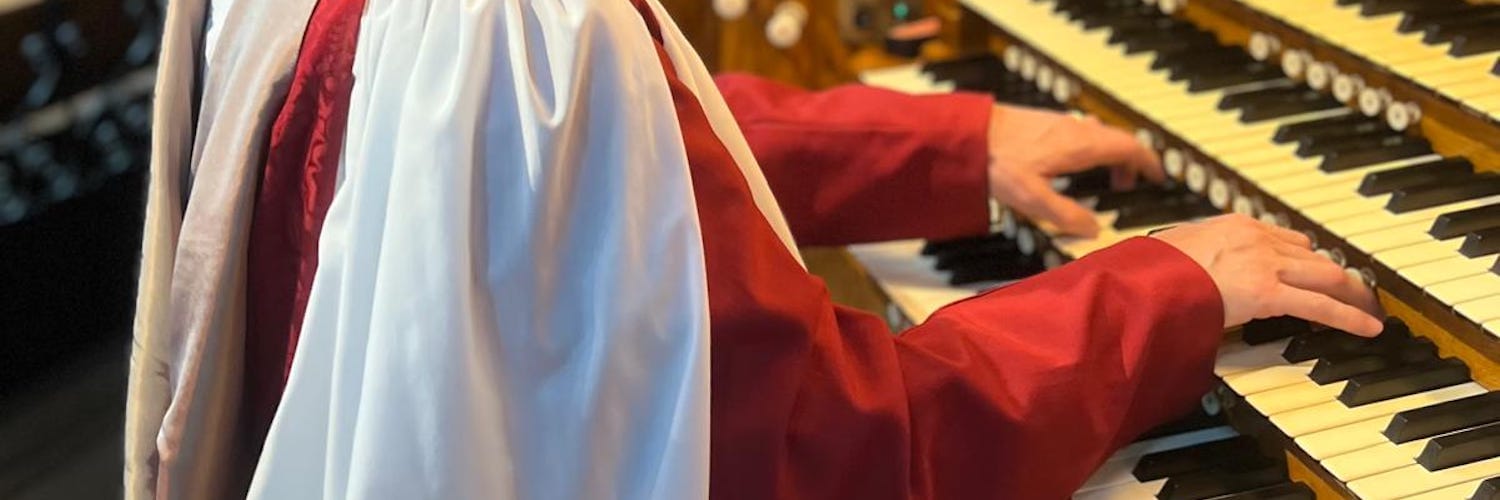
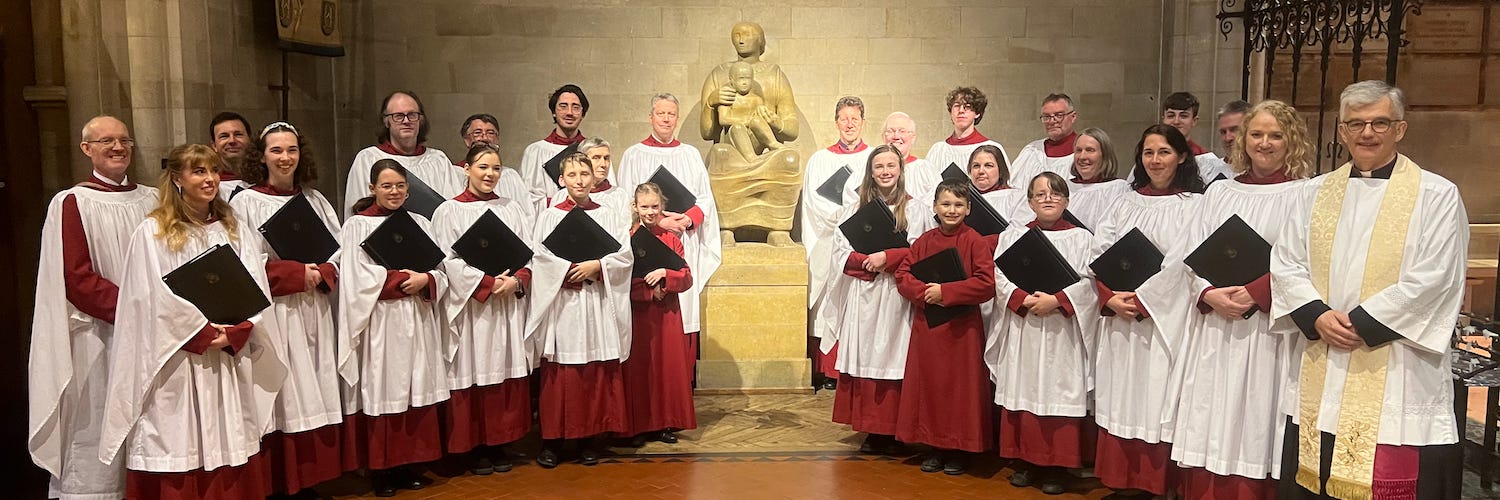
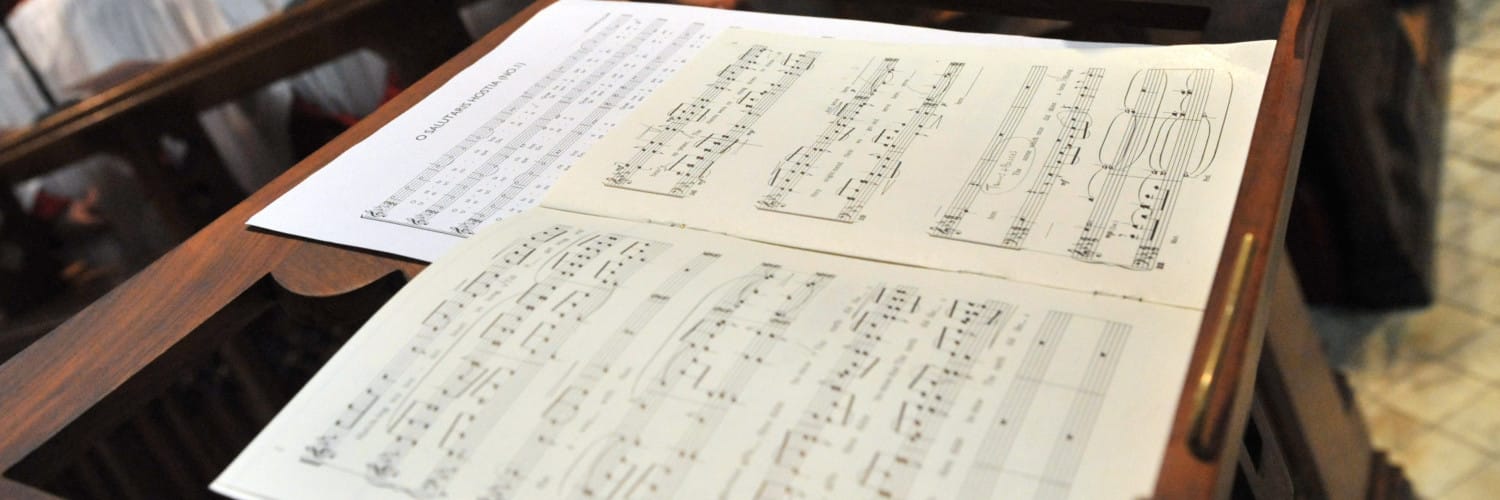
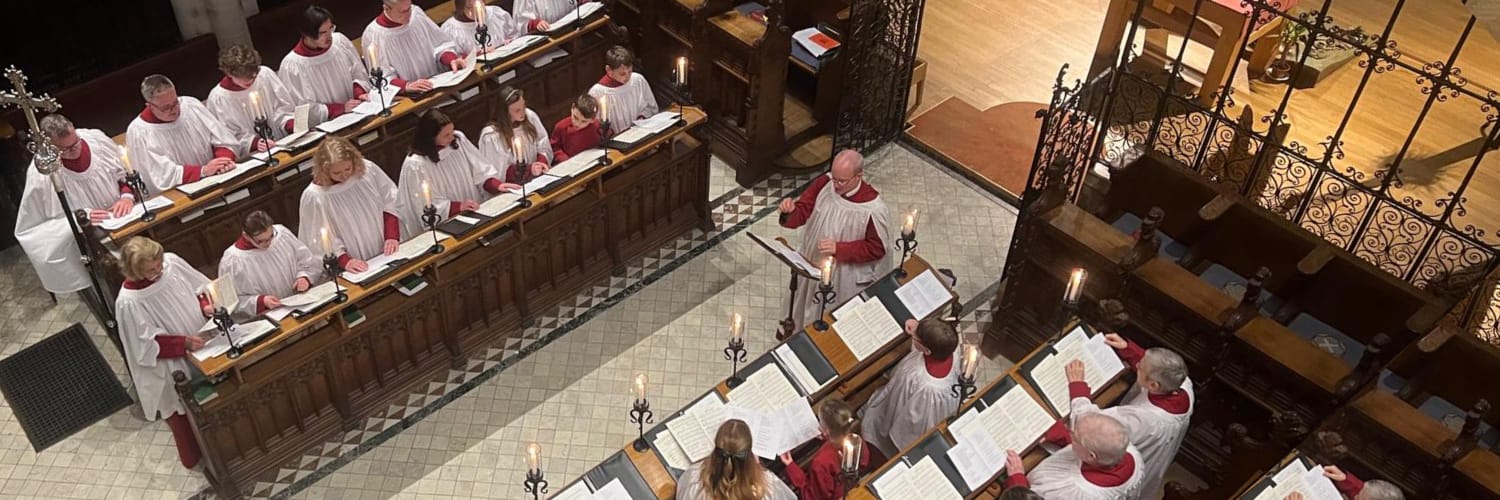
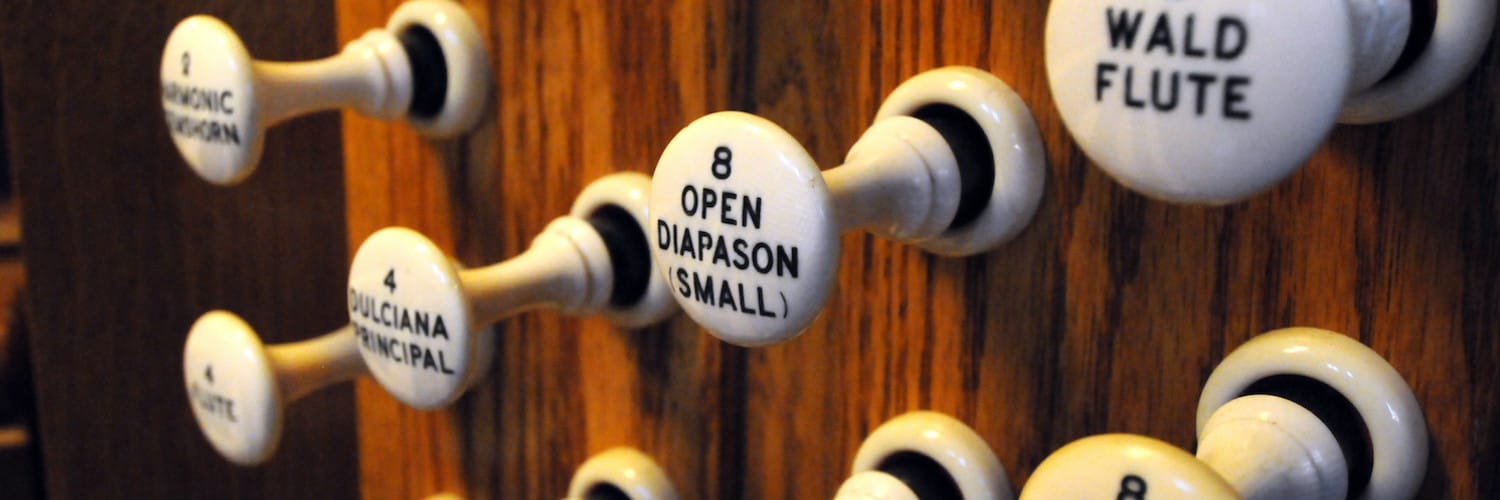
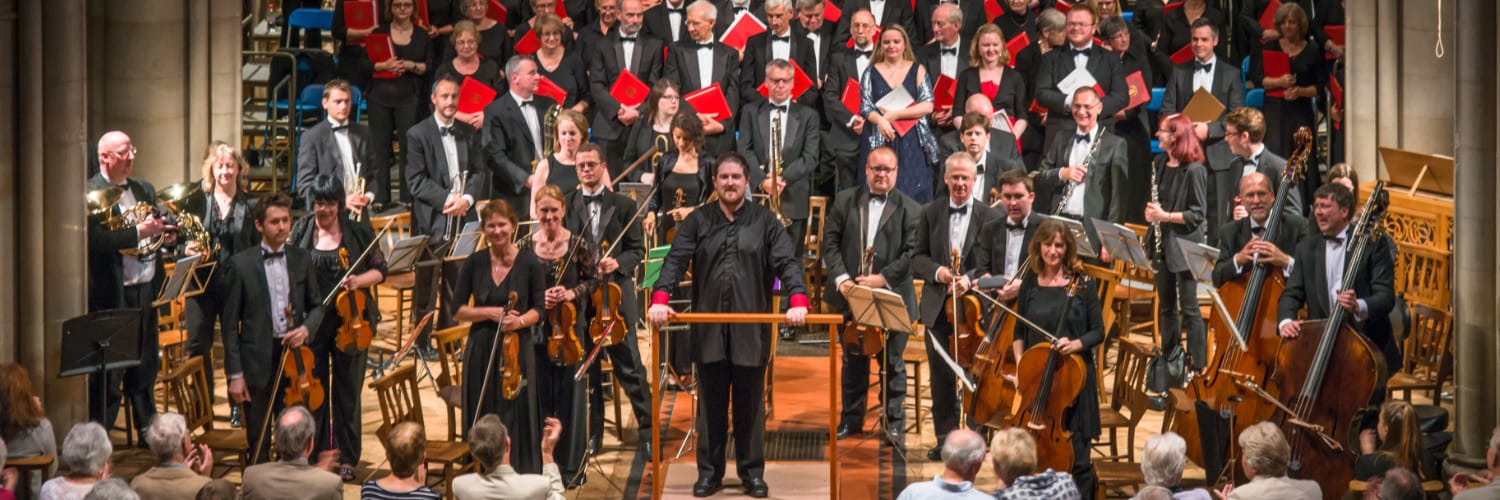
Music - Organ & Piano
J W Walker Organ

St Matthew's is home to arguably the finest parish church organ in the country. The fine four manual organ was built in 1895
by the firm J W Walker and Sons and is now of great historical importance.
The organ is one of the church's many artefacts donated by the Phipps family. Various members of the family gave generously,
including the original benefactor's widow, Mary, who provided the Organ. Contemporary accounts referred to the instrument as
one of the twelve best to be built in the country around that time. Today, the St Matthew's organ is one of only a few Walker
instruments of the period to remain in their original form and may be favourably compared with such instruments are those in
Bristol Cathedral and St Mary's, Portsea, Portsmouth.
No significant changes were made to the instrument between its completion in 1895 and 1971. At that date the actions and console were
replaced, and in 2005/2006 the organ underwent a major restoration project. No other changes were made, which is a cause for great
satisfaction as the original structure and pipework survive in their entirety.
Organ Restoration
In 1978 the church installed a forced-air heating system and the organ was fitted with a humidifier shortly afterwards. In 1980 a new
blowing plant was installed, replacing the previous equipment dating from the 1920s and in 1982 tuning slides were fitted to the pipework
to protect it from damage. In 1990 the Solo Organ actions, reservoirs and tremulant were fully overhauled and re-leathered. In 2005/2006
the organ underwent a major restoration project costing more than a quarter of a million pounds.
During the 1990s and early part of this century the organ became increasingly unreliable and difficult to maintain. The decline of the
instrument has been accelerated by the damaging effects of the forced-air heating system. The new system, installed at the same time as
the organ was rebuilt, is designed to greatly minimize these effects benefiting the organ and fabric of the church generally.
It gradually became apparent that the instrument was in fundamental need of complete restoration. To this end, in January 2004,
Harrison & Harrison of Durham were invited to inspect and report on the Organ's condition and draw up proposals for its restoration.
After due consideration of the many aspects of such an undertaking, the Parochial Church Council commissioned this work to be carried
out from May 2005. The work, carried out jointly by Harrison & Harrison and Kenneth Tickell & Co may be summarized as follows:
 |
To rebuild and restore the four manual 1895 Walker organ, as detailed in the report and proposals of Harrison & Harrison, Durham. |
 |
All pipework work to be repaired, cleaned and set to correct speech, the action to be fully overhauled and a design defect modified, the soundboards to be fully overhauled, grouted and re-palleted. |
 |
The wind system to be re-leathered and overhauled and 'breakdown' reservoirs reinstated in the crypt. |
 |
The 1971 console to be remade in the style of the original with new manual keyboards and drawstops, the electrical systems will be renewed. |
 |
The Pedal Trombone to be extended to 32ft pitch. |
 |
The entire organ cleaned, all parts adjusted, and any minor repairs carried out so as to leave everything in first-class condition. |
The extremely comprehensive proposals have been carried out to the highest standards with utmost regard for the original builder's intentions. No other tonal alterations have been made, except the extending of the Trombone rank, and all original components retained and repaired. The organ is acknowledged as an outstanding example of the organ builder's art and has responded well to sympathetic restoration. The instrument has been restored to first-rate performance and equipped with contemporary playing aids, greatly increasing its versatility.
Further history of the Organ can be found in the excellent new St Matthew's PCC publication, The 1895 Walker Organ of St Matthew's Church, Northampton. Priced at only £5 the book gives a detailed account of the Organ's life from 1895 to the present day. Copies may be obtained by contacting the Parish Office.
Organ Specification
| Pedal Organ | ||
|---|---|---|
| 1 | Double Open Diapason | 32 |
| 2 | Open Dispason (Wood) | 16 |
| 3 | Violone (Metal) | 16 |
| 4 | Bourdon | 16 |
| 5 | Principal | 8 |
| 6 | Flute | 8 |
| 7 | Contra Trombone | 32 |
| 8 | Trombone | 16 |
| i | Choir to Pedal | |
| ii | Swell to Pedal | |
| iii | Great to Pedal | |
| iv | Solo to Pedal | |
| Choir Organ (unenclosed) | ||
|---|---|---|
| 9 | Lieblich Bourdon | 16 |
| 10 | Gamba | 8 |
| 11 | Lieblich Gedact | 8 |
| 12 | Dulciana | 8 |
| 13 | Dulciana Principal | 4 |
| 14 | Flute | 4 |
| 15 | Harmonic Gemshorn | 2 |
| v | Swell to Choir | |
| Great Organ | ||
|---|---|---|
| 16 | Double Open Diapason | 16 |
| 17 | Open Diapason No.1 | 8 |
| 18 | Open Diapason No.2 | 8 |
| 19 | Open Diapason No.3 | 8 |
| 20 | Wald Flute | 8 |
| 21 | Principal | 4 |
| 22 | Wald Flute | 4 |
| 23 | Twelfth | 2 & 2/3 |
| 24 | Fifteenth | 2 |
| 25 | Mixture | III |
| 26 | Double Trumpet | 16 |
| 27 | Trumpet | 8 |
| 28 | Clarion | 4 |
| vi | Choir to Great | |
| vii | Swell to Great | |
| viii | Solo to Great | |
| Swell Organ | ||
|---|---|---|
| 29 | Contra Gamba | 16 |
| 30 | Open Diapason | 8 |
| 31 | Stopped Diapason | 8 |
| 32 | Violin Diapason | 8 |
| 33 | Echo Gamba | 8 |
| 34 | Vox Angelica (Tenor C) | 8 |
| 35 | Principal | 4 |
| 36 | Flute | 4 |
| 37 | Fifteenth | 2 |
| 38 | Mixture | III |
| 39 | Vox Humana | 8 |
| 40 | Oboe | 8 |
| 41 | Contra Fagotto | 16 |
| 42 | Horn | 8 |
| 43 | Clarion | 4 |
| ix | Tremulant | |
| x | Octave | |
| xi | Sub Octave | |
| Solo Organ | ||
|---|---|---|
| 44 | Harmonic Flute | 8 |
| 45 | Harmonic Flute | 4 |
| 46 | Harmonic Piccolo | 2 |
| 47 | Clarinet | 8 |
| 48 | Orchestral Oboe | 8 |
| 49 | Tuba (Unenclosed) | |
| xii | Tremulant | |
| Combination couplers | ||
|---|---|---|
| Great and Pedal pistons Couples | ||
| Generals on Swell foot pistons | ||
| Accessories | ||
|---|---|---|
| * Eight general pistons and general cancel | ||
| * Eight foot pistons to the Pedal Organ | ||
| * Eight pistons to the Great Organ | ||
| * Eight pistons to the Swell Organ (duplicated by foot pistons) | ||
| * Five thumb pistons to the Choir Organ | ||
| * Five thumb pistons to the Solo Organ | ||
| * Reversible pistons: i - viii | ||
| * Reversible foot pistons: ii, vii, 1,7 | ||
| * Eight divisional and 64 general piston memories | ||
| * Balanced expression pedals to Swell and Solo Organs | ||
* The actions are electro-pneumatic
* Manual compass is 61 notes; the pedal 30 notes
The Grand Piano

The Yamaha C7 grand piano was acquired in 2018 for use during educational events, concerts, and worship. Yamaha have been crafting pianos
since 1887, building a long-established tradition for quality, design and craftsmanship. At 7 feet 6 inches, the piano fills the entire
room and is the ideal size for solo, chamber, and choral accompaniment, and even piano concerti. The piano is undoubtably the highest
quality instrument in an affordable and flexible concert venue in Northampton. Please be in touch with the Parish Office should you
like to inquire about using one of our world-class instruments during your concert or event.
In addition to the individuals who supported the piano fund, we are grateful to the following organisations for their support of the project:
Foyle Foundation, The Constance Travis Charitable Trust, The Ekins Trust, The Friends of St Matthew's Music, Northampton Bach Choir and
The Williams Church Music Trust.
The Chamber Organ
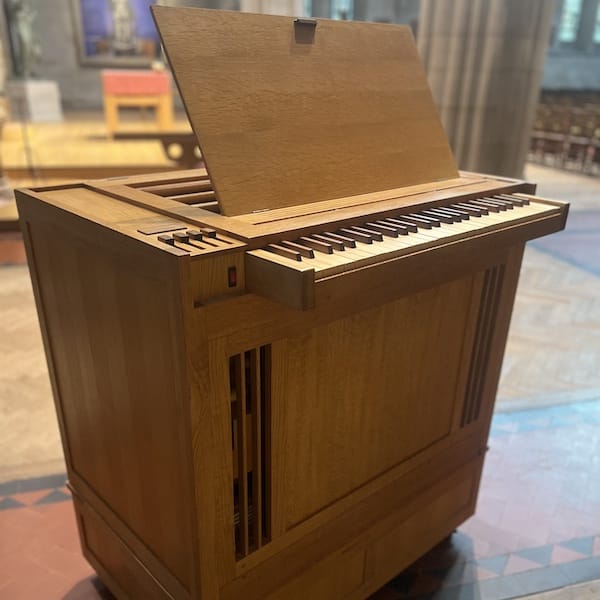
In October 2022, St Matthew's was fortunate to acquire a fine chamber organ built by Kenneth Tickell Organ Builders Northampton in the
1990s. The instrument has previously had two homes prior to coming to St Matthew's, most recently in the Carmelite Convent in Preston.
As a result of dwindling numbers, a decision had been made to close the convent - a huge building with an enormous garden - the remaining
nuns moving to other convents throughout the country. As Director of Music at St Matthew's, I made a visit to the convent to assess
the organ and to see if it was something the church should consider investing in.
The organ was sited in the chapel at the convent and was in a semi-permanent position on a platform with an organ stool made to measure.
It was apparent however that the instrument could be released from its platform, placed on casters for ease of movement, and played by an
organist in a standing position if desired. For our purposes at St Matthew's, this was an important consideration. The organ was found
to be well maintained and in good playing order, its four ranks of pipes speaking clearly and producing a lovely tone.
After a very generous lunch at the convent, taken in solidarity in a room set aside for visitors, I decided to offer to play a short recital
of pieces for chamber organ for the enjoyment of the nuns, who were clearly and understandably saddened by the fact they were moving out of
their home. They were delighted to hear their organ being played in the chapel one last time and became convinced that to let St Matthew's
purchase the organ was the right thing to do in the circumstances. Their main concerns were to see it looked after and put to good use.
On returning to Northampton, I advised the vicar and PCC that buying the organ was the correct way forward. Not only would it provide an extra
resource for us in our own music making, but it could also be used by visiting choirs and orchestras for continuo work. It also represented
fantastic value for money, and was an opportunity not to be missed. The organ was duly purchased and brought to the church and reassembled by
Michael Latham who had previously tuned and maintained the instrument. It was heard for the first time in St Matthew's on Advent Sunday 2022.
An unusual design of the original instrument included shutters in the top of the organ to control volume, almost like a swell box, and the pipework
placed behind a Perspex screen at the front of the instrument. These shutters are controlled by a sliding lever which the organist manipulates with
their right hand. After initial use for accompanying the church choir in singing various forms of music, particularly Tudor repertoire, this method
of controlling the volume was found to be impractical in a number of ways, and so P and S Organ Supplies were commissioned to take the instrument
back to their works, remove the Perspex front of the instrument, and design a simple pipe shade so that the pipework isn't too exposed. The resulting
work allows the sound of the organ to be heard more directly by the choir and makes the organ rather more lovely to look at. Whilst the shutters are
still available at the top of the instrument, these are now rarely used. Once the organ was returned to St Matthew's, time was allowed for the
pipework to settle in the instrument, before final voicing and tuning was undertaken.
The chamber organ now takes its place as part of the tremendous musical resources available at St Matthew's. It carries upon its case a small
plaque bearing testament to the fact that the instrument was purchased thanks to a bequest left to the church by Richard Alcock, and is a tangible
asset which reminds us of both his considerable legacy and his undoubted contribution to the parish over many years.
Information Quick Links
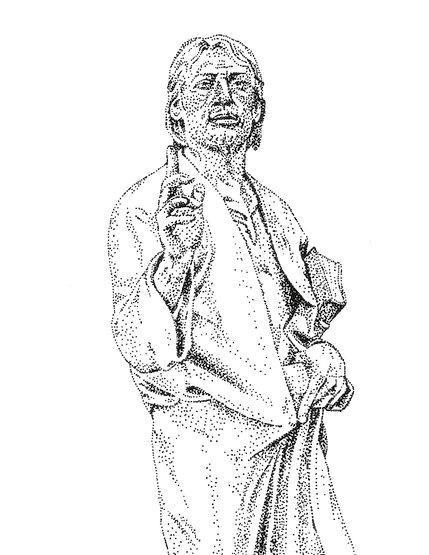


Join our Mailing List
To receive our email newsletter regarding the latest news and upcoming events at St Matthew's, kindly provide us with your name and email address below. By opting in and subscribing, you'll stay informed about our community, special services, insightful articles, and other valuable content.
Connect with us
Please show your support by following and subscribing to our church and choir social media channels, where you can find inspiring content, updates on our events and services, live streamed services, and uplifting messages.







